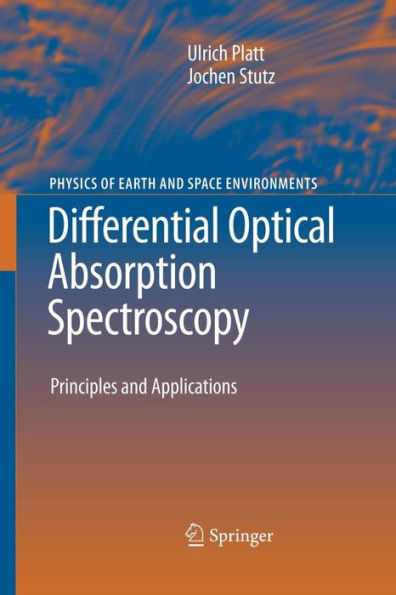Light is the essential source of information about the surrounding world for most of us. We see objects of different brightness and colours, or, in scientific terms, we distinguish objects by the way they reffect light of different wa- lengths with varying efficiency. It was exciting for both of us to learn that scientific instruments can expand our senses and provide information from this very same radiation that goes far beyond the simple recognition of - jects. Theabilityto“see”thecompositionof theairsurroundingusandabove our heads, to us and others, one of the most fascinating aspects of the app- cation of modern technology to study the atmosphere. This fascination drove many of the applications of the Differential Optical Absorption Spectroscopy (DOAS) method presented in this book, and continues to be the motivation for many current developments. DOAS is an elegant and powerful analytical method to study the at- sphere and is based on the relatively simple principles of classical absorption spectroscopy. It has therefore always been quite surprising to us that this method has not found wider use in atmospheric research and air-quality m- itoring. We have introduced many university students and researchers to DOAS, often wishing that we could improve our efforts with a comprehensive text that describes both the theoretical basis and the practical applications of the method.
1103264398
Differential Optical Absorption Spectroscopy: Principles and Applications
Light is the essential source of information about the surrounding world for most of us. We see objects of different brightness and colours, or, in scientific terms, we distinguish objects by the way they reffect light of different wa- lengths with varying efficiency. It was exciting for both of us to learn that scientific instruments can expand our senses and provide information from this very same radiation that goes far beyond the simple recognition of - jects. Theabilityto“see”thecompositionof theairsurroundingusandabove our heads, to us and others, one of the most fascinating aspects of the app- cation of modern technology to study the atmosphere. This fascination drove many of the applications of the Differential Optical Absorption Spectroscopy (DOAS) method presented in this book, and continues to be the motivation for many current developments. DOAS is an elegant and powerful analytical method to study the at- sphere and is based on the relatively simple principles of classical absorption spectroscopy. It has therefore always been quite surprising to us that this method has not found wider use in atmospheric research and air-quality m- itoring. We have introduced many university students and researchers to DOAS, often wishing that we could improve our efforts with a comprehensive text that describes both the theoretical basis and the practical applications of the method.
219.99
In Stock
5
1

Differential Optical Absorption Spectroscopy: Principles and Applications
598
Differential Optical Absorption Spectroscopy: Principles and Applications
598
219.99
In Stock

Product Details
| ISBN-13: | 9783540211938 |
|---|---|
| Publisher: | Springer Berlin Heidelberg |
| Publication date: | 06/04/2008 |
| Series: | Physics of Earth and Space Environments |
| Edition description: | 2008 |
| Pages: | 598 |
| Product dimensions: | 6.10(w) x 9.25(h) x (d) |
About the Author
From the B&N Reads Blog
